|
|
 |
|
|
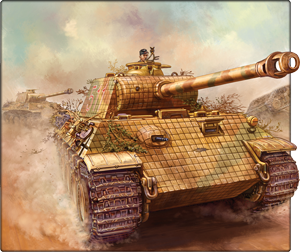 |
Panzer Brigades on the Eastern Front
by Phil Yates
After the destruction of Army Group Centre in Byelorussia by the Soviet Operation Bagration, there was little left to stop them short of the German border, 600 kilometres to the west. Hitler ordered twelve new panzer brigades created to ‘surprise and destroy the attacking armoured spearheads’. The first four of these entered combat on the Eastern Front in late August 1944, launching immediate counterattacks against the Red Army’s deepest thrusts.
|
When the Red Army launched its counteroffensive after the Battle of Kursk in August 1943, the German Army had little to stop it. The much vaunted panzer divisions had worn themselves out attacking the Soviet defences around Kursk, leaving the new Panther and Tiger battalions being rushed to the front as the only significant armoured forces. A number of Kampfgruppen, ad hoc battlegroups, were formed around these battalions and the remains of various panzer divisions under the command of experienced panzer leaders. Wherever they were employed these powerful battlegroups halted and threw back the Red Army’s thrusts.
|

|
| It was natural then, when the Red Army launched
Operation Bagration on 22 June 1944, that the German Army would attempt
to recreate their success in halting the Soviet rampage. The idea was
mooted by Hitler on 2 July, and by 11 July orders had been issued to
form twelve new panzer brigades. The first four were to be ready in just
over one month. Bearing in mind that a panzer division was usually
given six months to rebuild after being mauled at the front, the
timetable for creating whole new units was incredibly short. The Army
had suggested rushing refitting panzer divisions back to the front, but
Hitler had insisted on forming new units instead. |
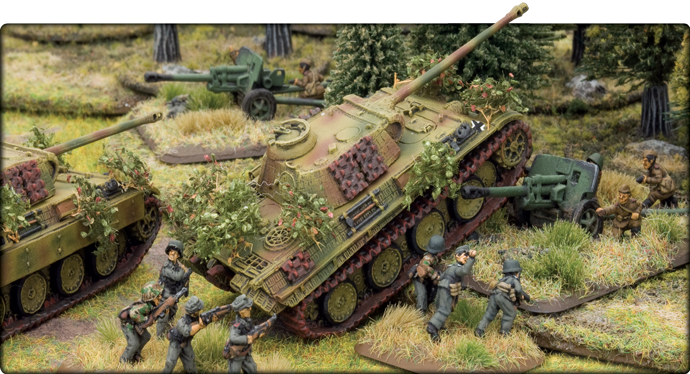 |
The first of these was 101. Panzerbrigade under the command of the
highly decorated Generalmajor Hyacinth Graf von Strachwitz und Camminetz
(Major-general Hyacinth Count of Strachwitz and Camminetz), known as
the Panzergraf or ‘Panzer Count’. Von Strachwitz was awarded the
Knight’s Cross with Swords as commander of the Grossdeutschland (Greater
Germany) Panzer Regiment, the lowest ranking officer given the award at
the time, and was then the third Army officer to be awarded the
Knight’s Cross with Diamonds for the relief
of the Cherkassy Pocket.
|
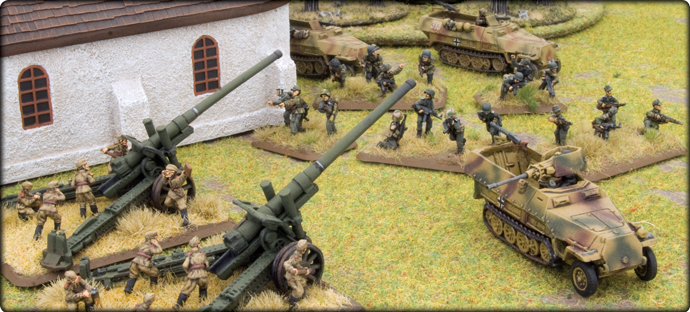 |
| The core of the brigade was 2101. Panzerabteilung
(2101st Armoured
Battalion) equipped with 36 Panther tanks. It was planned to equip the
battalion with a light company equipped with Panzer IV/70 self-propelled
guns as well, but these had not yet been produced. The brigade’s other
battalion was the small 2101 Panzergrenadierbataillon (2101st Armoured
Infantry
Battalion) with two companies mounted in Sd Kfz 251 armoured half-tracks
and a company of mortars and assault guns. The resulting battlegroup
was equipped with the best Germany had to offer, but had less than half
the number of Panther tanks and armoured half-tracks of a Panzer
division, not to mention lacking the Panzer IV tanks, motorised
infantry, and artillery that made up the bulk of the division. |
 |
On 18 August, 1944, three days after its hasty formation, 101. Panzerbrigade went into combat as Panzerverband von Strachwitz (Armoured Unit von Strachwitz) alongside SS-Panzerbrigade Gross, an even more hastily-formed group of SS training units. The Soviet offensive had reached the Baltic Sea coast just west of Riga in Latvia, cutting off the German Sixteenth and Eighteenth Armies. High Command had ordered Operation Doppelkopf (Doubled Head), an attack by the Panzerverband and six armoured divisions under the 39th and 40th Panzer Corps of the Third Panzer Army to cut off the Soviet spearhead and re-open communications with the trapped armies.
|
 |
| Panzerverband von Strachwitz was given the
northern-most position, attacking from Frauenberg (now Saldus) towards
Tukums where it would link up with an attack by Sixteenth Army. The
other six divisions were to attack from Lithuania up the main road from
Tauroggen (now Tauragè) through Schaulen (Siauliai) to Mitau (Jelgava),
cutting off the Soviet 2nd Guards Army. This route added 100 km (60
miles) to the distance they needed to cover, but would clear the main
road and railway line to Riga. |
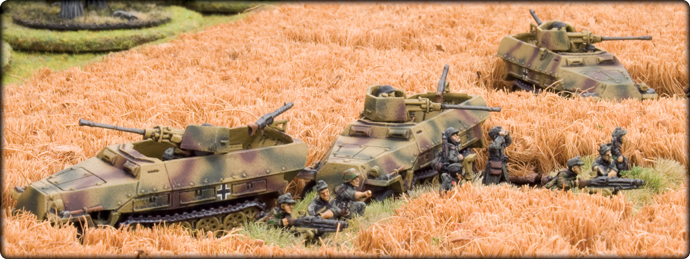 |
| Von Strachwitz punched through the Soviet 51st
Army to link up with Sixteenth Army the next day, then moved south to
retake Mitau (Jelgava). The attacks by 39th and 40th Panzer Corps were
not as successful. While the Germans had been bringing up their armoured
divisions, the Red Army had reinforced its positions with the 5th
Guards Tank Army. The reinforced defences stopped all of the German
divisions after advances of just six to twenty kilometres (four to
twelve miles). The German attacks were called off and much of the ground
won was given up. |
 |
The Red Army, thinking that the Germans had given up, withdrew the 5th Guards Tank Army, only to be caught by surprise when the German Third Army launched a concentrated attack from Doblen (Dobele) a week later. This succeeded in widening von Stachwitz’s corridor to 30km, but left the highway and rail line in Soviet hands.
On 24 August, Oberst (Colonel) Meinrad von Lauchert took over from von Strachwitz, who had been injured in a car crash. Panzerverband von Lauchert as it was now known, moved north into Estonia, defending Tartu near Lake Peipus. When the Red Army launched their operation to clear Estonia on 17 September, the Panzerverband formed the rearguard as the German Army Group Narva was evacuated through Pernau, finally leaving on 26 September. When it arrived back in Riga, the SS-Panzerbrigade Gross was disbanded, leaving 101. Panzerbrigade to fight on alone.
|
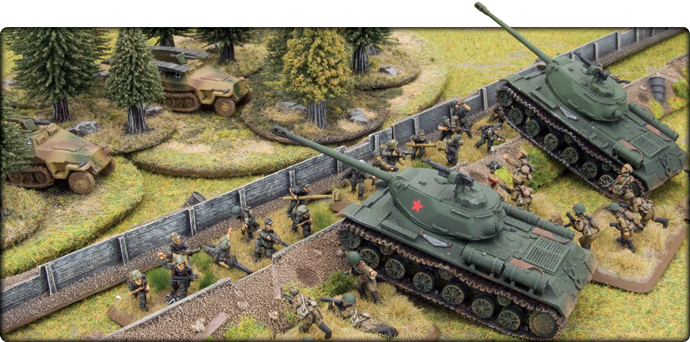 |
|
Now just a shadow of its former self, the panzer brigade formed the rearguard in early October, fighting across the old battlefields of Schaulen, Kelmė, and south to Tauroggen, counterattacking at Skaudvilè and Kvederne on the 8 and 9 October. Retreating through Tilsit (Sovetsk), it fought at Gołdap, Wirballen (Virbalis) and Nemmersdorf (Mayakovskoye) on the East Prussian border in mid October. By this time the brigade was almost completely destroyed and at the end of the month, the survivors were used to reform the 20th Panzer Division.
Despite its small size, 101. Panzerbrigade had formed an important part of the German defence of the Baltic States at a critical time, vindicating the panzer brigade concept in combat against the Red Army.
~ Phil.
|
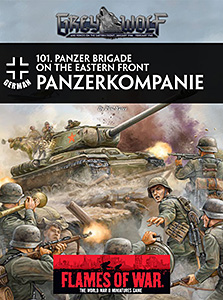 |
101. Panzer Brigades in Flames Of War Digital
Two Digital Exclusive briefings let you field the 101 Panzerbrigade:
- 101. Panzerbrigade on the Eastern Front – Panzerkompanie
- 101. Panzerbrigade on the Eastern Front – Panzergrenadierkompanie
|
Last Updated On Wednesday, February 24, 2016 by James at Battlefront
|
|
|